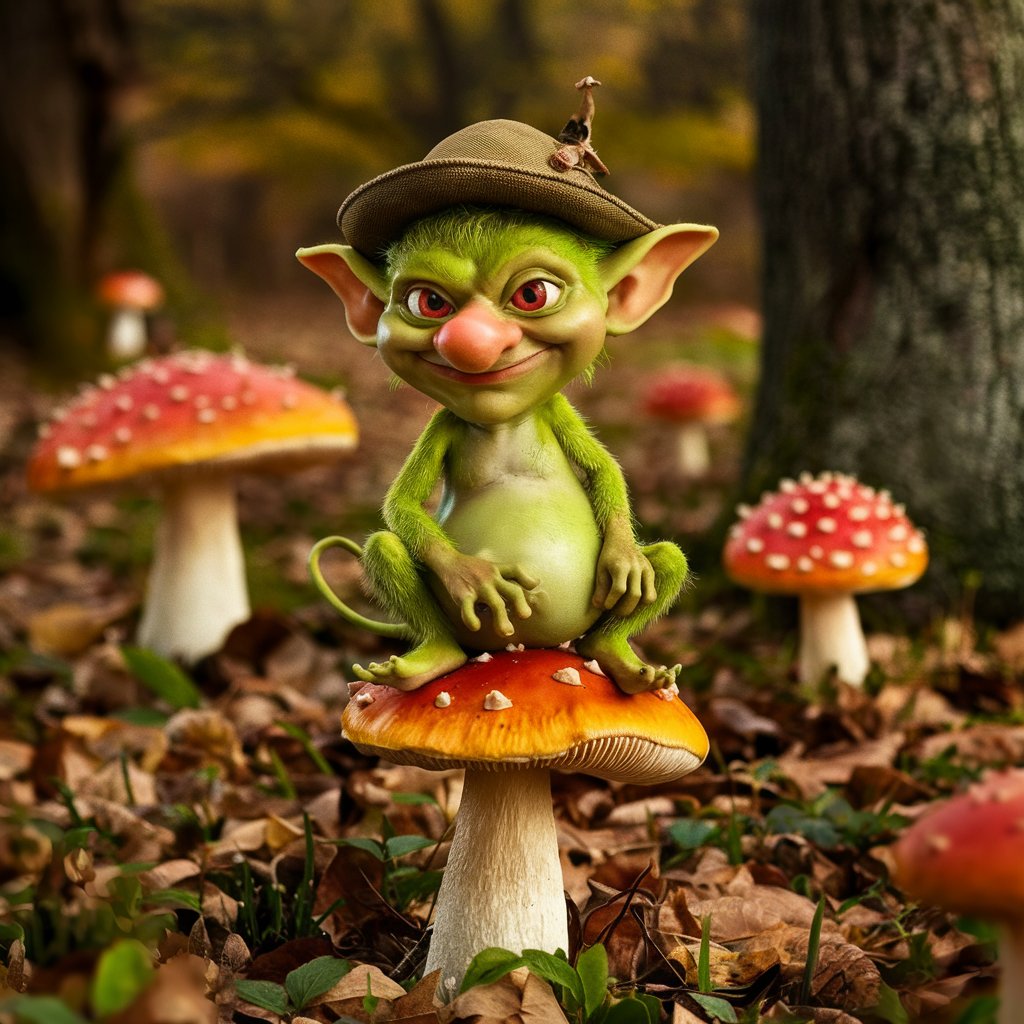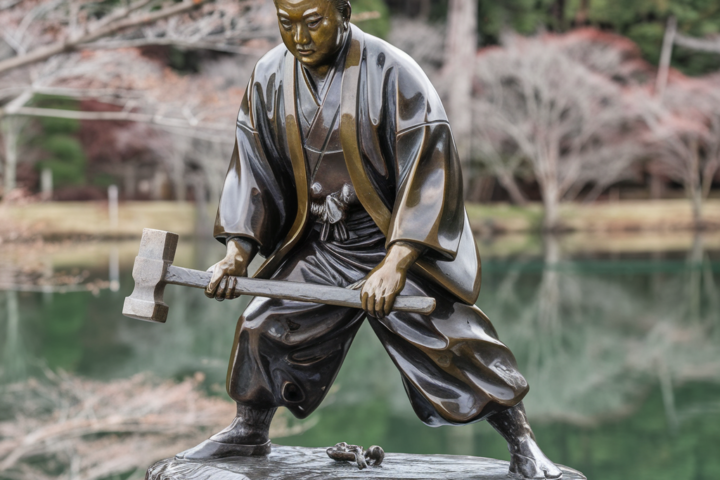Folklore is rich with a vast array of creatures, from fierce dragons to cunning shapeshifters, but one of the most intriguing and mischievous beings to emerge from these tales is the impish creature of folklore. These playful and often tricky entities have captivated the imagination of cultures around the world for centuries. Their stories evoke both laughter and fear, as they toe the line between harmless fun and dangerous trickery. In this article, we will explore the impish creature of folklore, its historical roots, the significance it holds in various mythologies, and the lessons its antics might teach us.
Table of Contents
The Nature of the Impish Creature of Folklore
The impish creature of folklore is often described as a small, mischievous being, typically with a playful and somewhat devious nature. Unlike the more malevolent demons or spirits, imps tend to be troublemakers without being truly evil. They are not out to cause harm on a large scale, but they thrive on creating chaos and mischief. They are often seen as embodying the trickster archetype, a figure found across many cultures that plays pranks and challenges social norms.
Imps are usually depicted as having physical characteristics that make them distinct from other mythical creatures. They are often small in stature, sometimes no larger than a child, and they frequently have pointy ears, sharp features, and mischievous grins. Their appearance can vary from culture to culture, but they generally share a common trait: they look like creatures who are up to no good.
Origins of the Impish Creature of Folklore
The impish creature of folklore can be traced back to various mythologies and cultural traditions. While they are most commonly associated with European folklore, particularly British and German traditions, similar creatures exist across the globe. Their characteristics and behavior can be found in many different forms, from the mischievous goblins of British Isles folklore to the trickster spirits in African and Native American traditions.
In Europe, imps were often considered to be small demons or spirits that served darker, more powerful beings. They were believed to be the minions of witches, devils, or other supernatural entities, carrying out the bidding of their masters by causing trouble for humans. In some cultures, imps were seen as manifestations of natural chaos, embodying the unpredictable and uncontrollable aspects of the world.
In Germanic folklore, for example, imps are sometimes referred to as “Kobolds.” These creatures were known for their ability to shape-shift and their love for trickery. They could be either helpful or harmful, depending on how they were treated by humans. Kobolds were believed to live in houses, mines, or other areas where they could cause minor disturbances like hiding objects or causing strange noises. However, they could also offer good fortune to those who treated them with respect.
The Impish Creature of Folklore Across Cultures
While the impish creature of folklore is most closely associated with European traditions, similar entities can be found in mythologies around the world. For instance, in Chinese folklore, there is a trickster figure known as the “Lao Lao,” a mischievous spirit that delights in causing confusion and disorder. Like imps, Lao Lao thrives on mischief and plays pranks on both mortals and deities.
In Native American cultures, the trickster spirit is often represented by animals like the coyote, raven, or fox. These creatures share the same playful and cunning characteristics of the impish creature of folklore, always playing tricks and outsmarting others. They are not evil by nature, but their actions often cause chaos and confusion.
In Africa, many indigenous cultures have stories of trickster spirits known as “Anansi” in West African mythology or the “Hare” in African and Caribbean folklore. Anansi is often depicted as a spider or a human figure who is clever, quick-witted, and prone to trickery. These creatures are similar to imps in that they embody the same impish qualities—outsmarting others for personal gain or simply for the fun of it.
The Characteristics of the Impish Creature of Folklore
The impish creature of folklore is typically defined by its love for mischief, its small size, and its ability to either aid or hinder humans. However, the key trait that most imps share is their trickster nature. They often delight in creating confusion, making objects disappear, or leading people astray with misleading clues. Whether they are stealing food from a household or causing accidents on a lonely road, their actions are never without consequence, even if the consequences are not always severe.
Imps are also notable for their ability to shapeshift. In many stories, imps can take on different forms, making it difficult for humans to recognize them. This ability to disguise themselves allows imps to sneak past human defenses and continue their pranks undetected. Their shapeshifting abilities also contribute to their reputation as creatures of mystery, whose true nature is always elusive.
One of the most fascinating aspects of the impish creature of folklore is its relationship with humans. In many tales, imps are not inherently malevolent, but they often test the patience and resourcefulness of the people they encounter. In some cases, imps may offer rewards or gifts to those who manage to outwit them, while in other cases, they simply vanish once they have completed their pranks.
The Role of the Impish Creature of Folklore in Folktales
In many cultures, the impish creature of folklore plays a central role in folktales that convey moral lessons. These tales often depict the imp as a challenge that the protagonist must overcome. The protagonist may be tasked with solving riddles, finding hidden objects, or outsmarting the imp in some way. The outcome of these stories typically reinforces values such as intelligence, perseverance, and the importance of respecting the natural world.
For example, in some European folktales, imps are depicted as guardians of treasures or magical items. They challenge adventurers who seek to claim these treasures, forcing the adventurers to prove their worthiness through cunning and resourcefulness. The imp’s test is not just about outwitting the creature but also about proving that the seeker is deserving of the reward.
In other stories, the imp’s role is more lighthearted, serving as a comedic foil to the protagonist’s seriousness. In these tales, the imp may cause minor disruptions, but its antics ultimately lead to a happy ending, where the protagonist learns something valuable or achieves a personal victory.
The Cultural Significance of the Impish Creature of Folklore
The impish creature of folklore is more than just a figure of mischief; it is a reflection of the human tendency to both create and contain chaos. In many ways, imps represent the unpredictable nature of life itself. They embody the tensions between order and disorder, between the known and the unknown. They serve as reminders that not everything can be controlled, and sometimes, the best response to life’s challenges is a little bit of humor and wit.
Moreover, the imp is a symbol of the trickster archetype, which appears in various forms across cultures. Tricksters, whether imps or other figures, challenge societal norms and question authority. They often blur the lines between good and bad, making them figures of both admiration and fear. The imp’s role as a boundary-pusher encourages people to rethink the rules and conventions of society.
Modern Interpretations of the Impish Creature of Folklore
In modern times, the impish creature of folklore continues to inspire creativity in literature, film, and art. These creatures have appeared in countless fantasy novels, video games, and movies, often taking on new forms while retaining their mischievous nature. Whether as a comic relief character in a children’s movie or a more sinister being in dark fantasy, the imp remains a staple of popular culture.
One notable modern depiction of the imp is in the world of role-playing games (RPGs), where imps often appear as magical creatures with various abilities. In these games, they may serve as minor antagonists, providing challenges for players to overcome. Despite their often small size and low level of power, imps remain formidable opponents due to their trickster abilities and cunning nature.
Also Read: Foster at CryptoProNetwork: Unlocking Opportunities in the Crypto World
Conclusion: The Enduring Legacy of the Impish Creature of Folklore
The impish creature of folklore may have started as a small, mischievous being in ancient myths, but its legacy endures to this day. From its origins in European folklore to its presence in modern entertainment, the imp continues to be a symbol of chaos, wit, and the unpredictable forces that shape our lives. Through stories of imps, we learn valuable lessons about resourcefulness, humility, and the importance of laughing at life’s little disturbances.
As long as humans continue to tell stories, the impish creature of folklore will remain a beloved figure in myth and legend. Whether it is causing trouble in a small village or offering a challenge to an adventurer, the imp will always be there, reminding us that life is never as simple as it seems—and sometimes, the best way to face a challenge is with a smile and a trick up your sleeve.











